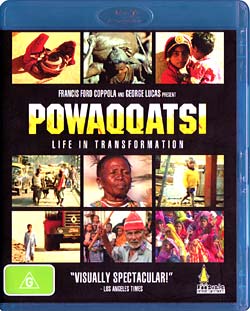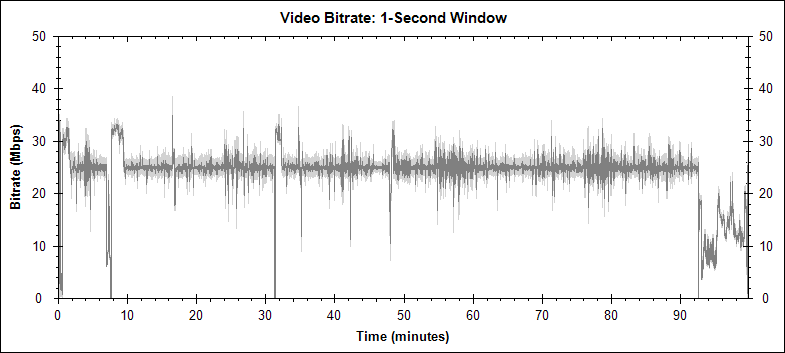 Picture:
Picture:  Sound:
Sound:  Extras:
Extras: 

Download scan of review (JPEG, right click, Save As)
Movie:  Picture:
Picture:  Sound:
Sound:  Extras:
Extras: 
This is the second of a three movie series by director Reggio (preceded by Koyaanisqatsi: Life Out of Balance in 1982, and followed in 2002 by Naqoyqatsi: Life as War). It is a collection of moving images showing people in their everyday lives from around the world, especially in situations novel to Western eyes, accompanied by music written by Philip Glass. It is beautifully shot, like a moving National Geographic picture spread.
But I found it to be a quite frustrating movie at times. Every minute or two a striking new scene would appear and I would have liked to know more: where was it? What were the people doing? How can I find out more?
But there is no more. You are stuck with the fleeting, or dwelling, images of people and places without context or explanation.
The picture was regularly flecked with marks: black specks on the white or light scenes, white ones on the dark. Occasionally these were larger than motes, sometimes seeming to be short threads curving across a dozen pixels.
Having said that, they didn't demand attention for the most part. Indeed, after a few minutes they ceased to be a distraction as my mind tuned them out, but when from time to time I remembered and again looked for them, they were still there. Those defects aside, the picture was smooth and artefact free, if a little less sharp and detailed than I had hoped. Perhaps an earlier generation of stock would have made a difference.
Or perhaps not. A lot of the picture is shot in slow motion. This is smooth over time, for the most part, and usually stretching time by around 1:2. Occasionally there is a spurt artificial slow-mo, achieved through repeating frames, obvious by the judder this introduces into the picture. Slow motion photography tends to compromise sharpness, either through the need for a wider aperture or for faster, courser grained film stock.
The music was strong, powerful and highly rhythmic. And beautifully clean and unstressed. But it was not delivered with much subtlety in terms of a sound field. It was presented more as a wall of sound, with some bleed to the surrounds, but with a marked left/right separation at the front with relatively little between speaker imaging.
Oddly, Umbrella hasn't included a 'Scenes' or 'Chapter' menu, although you can skip through the 16 chapters using your player's remote.
 (Australian rating); Locked to Region B
(Australian rating); Locked to Region B
The following video bitrate graph was generated by BDInfo 0.5.8:
